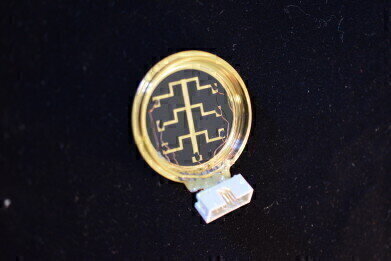News
Warwick Technology Detects Bacteria in Minutes
Jun 22 2019
Researchers at the School of Life Sciences at the University of Warwick have devised a way of detecting bacteria in samples or commercial products in minutes using new technology. By ‘zapping’ the samples with electricity, live bacteria absorb dye molecules, causing the cells to light up and allowing them to be counted easily.
Through combining biological experiments, engineering and mathematical modelling the scientists found that healthy bacteria cells and cells inhibited by antibiotics or UV light showed completely different electric reactions. These findings* could lead to the development of medical devices which can rapidly detect live bacterial cells, evaluate the effects of antibiotics on growing bacteria colonies, or which could identify different types of bacteria and reveal antibiotic-resistant bacteria.
The researchers have an ambitious plan to deliver the technology to market to maximise social good and have founded a start-up company Cytecom to commercialise the idea. The company has been awarded a grant from Innovate UK, the national innovation funding agency. This governmental support accelerates the process and the devices will be available to researchers and businesses in the very near future.
Dr Munehiro Asally, Assistant Professor at the University of Warwick said: “It is such an exciting time to work on bio-electricity of bacterial cells. This work demonstrates that bacterial electricity can lead to societally important technology, while at the same time gaining fundamental insights into our basic understanding of cells. The tool we developed can offer more opportunities by allowing experiments which were not possible to perform before.”
Dr James Stratford, from the School of Life Sciences and Warwick spinout company Cytecom commented: “The system we have created can produce results which are similar to the plate counts used in medical and industrial testing but about 20x faster. This could save many people’s lives and also benefit the economy by detecting contamination in manufacturing processes.”
Dr Yoshikatsu Hayashi, from the University of Reading said: “Using the widely used mathematical model in Neuroscience, we revealed a common mechanism of excitable cells, neuron and bacteria cells, and the extended neuronal model could explain two distinct electric reactions of healthy and unhealthy bacteria cells. Surprisingly, a single parameter representing the degree of non-equilibrium across the membrane was sufficient to explain the distinct responses of the cells. This is an important step towards understanding the origin of electrical signalling.”
*Published in Proceedings of the National Academy of Sciences of the USA (PNAS)
Digital Edition
Lab Asia Dec 2025
December 2025
Chromatography Articles- Cutting-edge sample preparation tools help laboratories to stay ahead of the curveMass Spectrometry & Spectroscopy Articles- Unlocking the complexity of metabolomics: Pushi...
View all digital editions
Events
Jan 21 2026 Tokyo, Japan
Jan 28 2026 Tokyo, Japan
Jan 29 2026 New Delhi, India
Feb 07 2026 Boston, MA, USA
Asia Pharma Expo/Asia Lab Expo
Feb 12 2026 Dhaka, Bangladesh



















